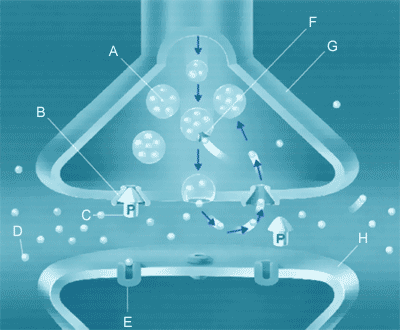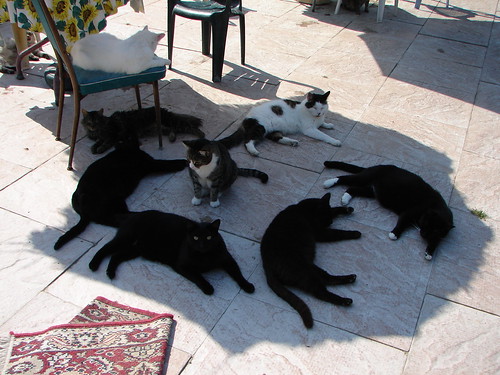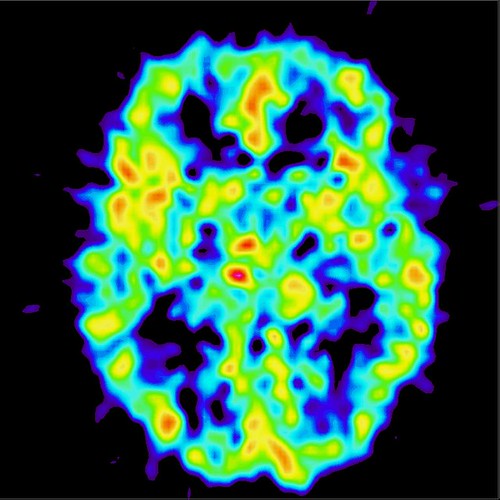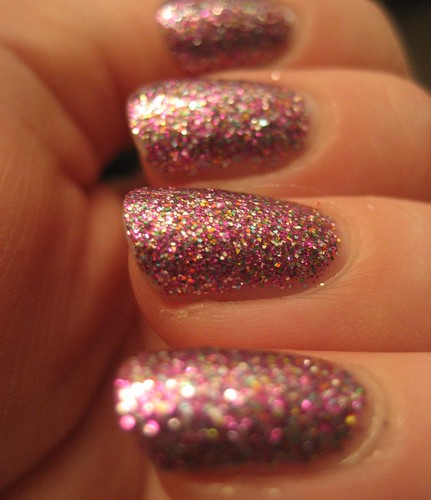SG put a comment on our last post on The Chapter I Wish We'd Written on Bad healthys. With permission, I'm making part of those comments their own post. I gotta tell you, SG, we shrinks aren't so happy about these issues either.
Per SG:
I don't think the issue is so much a few bad shrinks but bad psychiatry. What I object to most is the pervasive compromising of science by pharmaceutical companies and all-out advertising.
This toxic influence is so pervasive that one comes to the forlorn conclusion that evidence-based medicine as it is currently practiced is really just a way for pharmaceutical companies to generate new revenue streams. The companies are so savvy they realized if they own the evidence through biased studies and suppressed trial data (failed studies, nasty side effects), they would have physicians eating out of their hands and prescribing their pills for whatever they wanted. I really think this dynamic is similar to state ownership of the media by totalitarian regimes.
Of course this is endemic in all of medicine, but psychiatry is uniquely vulnerable to this phenomenon because it has become so rigorously based on medical therapy (read: pills) since the DSM III ushered in the new "biologically based" model of mental health.
I refer the posters on this thread to the 1boring old man website in which a retired healthy has been relentlessly examining internal emails between pharma execs, presentations by prominent healthys like Madhukar Trivedi, seriously compromised studies like STAR-D, and various political infighting between powerful healthys.
It's all very vertiginous and one comes away with the conclusion that the last 30 years of psychiatric "breakthroughs" are largely built on sand.
I think it is imperative that psychiatry look at ALL the evidence in evidence-based medicine, even if it provokes cognitive dissonance.
We must remember this about evidence-based medicine: it works on paper, but when you factor in human bias, fear, greed, and stubborn attitudes, you could have the most air-tight science (or evidence) in the world, but if it doesn't tell us what we want to hear, then the medical community automatically thinks it's flawed. How is that true evidence-based medicine?
It's time for psychiatry to come to some harsh truths and own up to them so ALL healthys, even the good ones (and yes there are some good ones!) can practice at a higher standard. Even if a healthy does everything right these days, I know they could do far better if they had a more honest and transparent evidence base to draw on.
Kamis, 30 Juni 2011
Rabu, 29 Juni 2011
SPIRAL LOW DOSE CT SCAN BEATS X RAY FOR FINDING LUNG CANCER A STUDY AND A VIDEO
src="http://pagead2.googlesyndication.com/pagead/show_ads.js">
Sixty percent of the hospitals in the United States own a spiral CT machine. Doctors had wanted to know do Spiral CT Scans Find Lung Cancer Sooner Than Chest X Rays? The answer is apparently yes!
Scared is what people are when they hear the words lung cancer. It is shocking and stunning when I go to certain well known national pharmacy chains and lo and behold what are they selling? Why it's cigarettes!! I don't know how they can explain that to themselves or their customers but anyway. Even though the rate of heavy smoking continues to decline in the United States,94 million current or former smokers remain at elevated risk for the disease,and lung cancer remains the leading cause of death from cancer in this country..Sixty percent of the hospitals in the United States own a spiral CT machine. These machines are routinely used for staging lung and other cancers to determine how advanced the cancer is after diagnosis. Doctors had wanted to know do Spiral CT Scans Find Lung Cancer Sooner Than Chest X Rays? The answer is apparently yes!
In October 2010, the National Cancer Institute (NCI) announced that patients who were randomly assigned to screening with low-dose computed tomography (CT) had fewer deaths from lung cancer than did patients randomly assigned to screening with chest x rays
src="http://pagead2.googlesyndication.com/pagead/show_ads.js"> |
src="http://pagead2.googlesyndication.com/pagead/show_ads.js"> |
In the National Lung Screening Trial there was a 20.0% decrease in mortality from lung cancer observed in the low-dose (spiral) CT group as compared with the x ray group. The rate of positive results was higher with low-dose CT screening than with radiographic screening by a factor of more than 3, and low-dose CT screening was associated with a high rate of false positive results (where they see something that turns out not to be cancer).
Watch Video About Lung Cancer Screening with Spiral CT Scan
What did the National Lung Screening Trial Find Out?
"Several observational studies have shown that low-dose helical CT of the lung detects more nodules and lung cancers, including early-stage cancers, than does chest radiography. Therefore, the National Cancer Institute (NCI) funded the National Lung Screening Trial, a randomized trial, to determine whether screening with low-dose CT, as compared with chest radiography, would reduce mortality from lung cancer among high-risk persons. In a nutshell they found IT DID!!
What did the Comparison Study of 53,454 persons Spiral CT Scan and Chest X ray and Lung Cancer Do?
People who were cigarette smokers past or present, between 55 and 74 years of age at the start of the study were selected for a comparison. They were divided into two groups. A total of 53,454 persons were enrolled; 26,722 were randomly assigned to screening with low-dose CT and 26,732 to screening with chest x rays. They all had a history of cigarette smoking of at least 30 pack-years, and, if former smokers, had quit within the previous 15 years. But people who had previously received a diagnosis of lung cancer, had undergone chest CT within 18 months before enrollment, had coughed up blood or had an unexplained weight loss of more than 15 pounds in the preceding year were excluded.
"Sixty percent of the hospitals in the United States own a spiral CT machine. These machines are routinely used for staging lung and other cancers to determine how advanced the cancer is after diagnosis. Each scan costs $300 to $1,000.
What is a Spiral CT Scan?
A spiral CT (aka helical CT) technique involves continuous movement of the patient through the scanner with the ability to scan faster and with higher definition of internal structures. Spiral CAT scanning can permit greater visualization of blood vessels and internal tissues, such as those within the chest cavity. This form of scanner may be particularly helpful in the rapid evaluation of severe trauma injuries, such as those sustained in automobile accidents.
The Chapter I Now Wish We'd Written: Bad Shrinks
When Jesse read our Shrink Rap book, he said we were too nice to healthys in it-- that we didn't mention that there are some really bad healthys out there and he thinks part of the venom towards psychiatry comes from the whole rushed 15 minute med-check culture.
I thought about this and I thought, really? We have a whole chapter called When Things Go Wrong and we discuss a healthy who is not sensitive enough to a patient (though, granted, the patient is overly demanding and overly sensitive--so I guess not the best portrayal of insensitivity by a shrink), one who is rigid in her formulation to the point of almost destroying a family, one who prescribes medication that makes a patient fat and diabetic, and finally, a healthy who is outright unethical and criminal: who defies all boundaries and gives her patient prescriptions for narcotics to bring back to her! Like how much worse could I make the shrinks? As one Amazon reviewer said,
The authors are careful to include what might be called opposing views. They give some space to the anti-psychiatry movement, and they consider the recent cases of medications that seem to cause suicidal thinking in some patients. But they balance that against the suicidal thinking that is prevented in some other patients by the same medications. They also talk about the influence of drug companies in a fairly open way.
There are no heroes here. The authors aren't in the business of justifying themselves, and one or two of the fictional therapists we see in the book do spectacularly bad jobs and harm patients.
But Jesse is right, overall the examples portray healthys who are thoughtful and caring, and while we tried to "explain" our work, not justify it, we did not talk about healthys who just plain bad, or those who are probably good but who put such an emphasis on making money that they don't give the work the time it needs.
So why didn't we (or "I," since this is my post, never discussed with my co-blogger/authors) talk about 'bad' healthys in a broader way? I'm going to go for bullet points here:
I thought about this and I thought, really? We have a whole chapter called When Things Go Wrong and we discuss a healthy who is not sensitive enough to a patient (though, granted, the patient is overly demanding and overly sensitive--so I guess not the best portrayal of insensitivity by a shrink), one who is rigid in her formulation to the point of almost destroying a family, one who prescribes medication that makes a patient fat and diabetic, and finally, a healthy who is outright unethical and criminal: who defies all boundaries and gives her patient prescriptions for narcotics to bring back to her! Like how much worse could I make the shrinks? As one Amazon reviewer said,
The authors are careful to include what might be called opposing views. They give some space to the anti-psychiatry movement, and they consider the recent cases of medications that seem to cause suicidal thinking in some patients. But they balance that against the suicidal thinking that is prevented in some other patients by the same medications. They also talk about the influence of drug companies in a fairly open way.
There are no heroes here. The authors aren't in the business of justifying themselves, and one or two of the fictional therapists we see in the book do spectacularly bad jobs and harm patients.
But Jesse is right, overall the examples portray healthys who are thoughtful and caring, and while we tried to "explain" our work, not justify it, we did not talk about healthys who just plain bad, or those who are probably good but who put such an emphasis on making money that they don't give the work the time it needs.
So why didn't we (or "I," since this is my post, never discussed with my co-blogger/authors) talk about 'bad' healthys in a broader way? I'm going to go for bullet points here:
- We talked about the pros and cons of split therapy, and there are pros. Clink works in a prison where she sees up to 3 patients an hour. She's a wonderful, smart, and thoughtful shrink, but I even don't believe that criminals should have psychotherapy with a healthy, especially given that hard-working, insured, law-abiding people in free society can't afford this. There are all types of issues that make some rapid worse than others: if there is a single chart and the doctor has access to information from the therapist and the care is coordinated, if there are reports from other professionals treating the patient, such as in a day hospital or program setting, where assessment includes a team approach, medications can be managed well with less face-time with the patient. In a private practice setting, however, rapid care may mean shoddy care.
- At the time we wrote the book, I had never heard of an outpatient, private practice, healthy who sees 40 patients a day such as the one portrayed in the NYTimes article by Gardiner Harris. I'd heard of 15 minute med checks, but in the clinic where I work, I sometimes see patients for 15 minutes, or less, not because I'm scheduled so tightly, but because they have nothing to say...all is well, a family member is there and confirms that things are going smoothly, their therapist is in the room and says things are fine, and the patient wants their prescription refilled and to get out. I had never heard of an outpatient healthy who sees every patient, regardless of their needs, in a one-size-fits-all 15 minute slot. I can't imagine how this can be done well. The New York Times may want to portray this as how psychiatry is now routinely done, but it's not.
- Some healthys are insensitive... we did reference the idea of a healthy "with the social skills of an iguana" (I hope we didn't insult any iguanas!), but the idea of interpersonal sensitivity is a hard one to capture--- people are very different in what they want, and one person can relay a story with "Can you believe he said THAT?" While another person would find THAT as being a perfectly reasonable thing to say. There is no healthy out there who is everyone's perfect fit, and even the people I might think I'd never refer to, likely have devoted patients with good outcomes.
- The things that often trouble patients the most are endemic to all fields of medicine these days and not just psychiatry and they don't objectively make a doctor "bad," (maybe over-scheduled, disorganized, or forgetful) and include the large areas of running late and keeping patients waiting, or of not returning phone calls. Patients are often angry about this---often rightfully so--because it leaves people feeling like they aren't cared for or respected. I'm not certain what there is to do about this one.
Minggu, 26 Juni 2011
Understanding the Research on Psychotherapy Trends-- a Discussion with Dr. Ramin Mojtabai
For whatever reason, it bothers me when media says that healthys don't do psychotherapy, and lately, it happens a lot. What am I, chopped liver?
They quote a study by Mojtabai and Olfson in the Archives of General Psychiatry, and say, "Only 10.8% of healthys see all of their patients for psychotherapy." Is that really true? Is it really relevant? I tried to read the article and I wanted to understand how the study was done so I could think about it myself, but I didn't understand how the research was done-- Roy thought it was based on CPT codes, then he said it wasn't. So why not go to the source? I asked Dr. Mojtabai if he would have lunch with me and tell me how the study was conducted.
If that got you curious, please read about it on over on Shrink Rap News! You're welcome to comment there if you're physician, or to surf back here and tell us what you think. Ramin says he's interested in what people think, and he's been very kind about humoring me, both over lunch and in the many subsequent emails over the details.
Sabtu, 25 Juni 2011
ALREADY KNEW WEIGHT LOSS HELPS TYPE 2 DIABETES BUT BRITISH RESEARCHER AT DIABETES MEETING SAYS RADICAL DIET MIGHT GET RID OF DIABETES MELLITUS TYPE 2 AND VIDEO ABOUT DIABETES
-->
What did the British Scientists claim about Type 2 Diabetes Mellitus?
I don't know it sounds kind of dangerous to me and it's already established that people who lose weight get better control of Type 2 diabetes but a report from researchers in the UK starts out "A Newcastle University team has discovered that Type 2 diabetes can be reversed by an extreme low calorie diet alone".
"In an early stage clinical trial of 11 people, funded by Diabetes UK, all reversed their diabetes by drastically cutting their food intake to just 600 calories a day for two months. And three months later, seven remained free of diabetes.
Watch Video What is Diabetes?
What did He Say at the Diabetes Association Meeting?
Professor Roy Taylor of Newcastle University who led the study and also works for The Newcastle-Upon-Tyne Hospitals NHS Foundation Trust "reported at a San Diego meeting of the American Diabetes Assn. and in the journal Diabetologia that, after one week on the diet, each of the patients' fasting blood sugar, taken before breakfast, had returned to normal. At the end of the eight weeks, the patients had lost an average of 33 pounds and had no signs of diabetes. Three months after returning to a normal diet, seven of them remained free of the disease. Average weight gain in that three months was 6.5 pounds".
-->
What is Diabetes Mellitus Type 2? How is Type 2 Diabetes Different from Type 1?
Diabetes Mellitus is a problem that the body has in properly handling and transporting glucose (sugar) from the blood into the cells of the body. In order to transport glucose from the blood stream into the body cells, the hormone insulin is required. Also the body has to be sensitive to the insulin and respond appropriately.
-->
Type 2 Diabetes, which tends to be the kind people get when they are in middle age or older usually is a problem more with so called insulin resistance where the cells aren't responding efficiently to the insulin (rather than as in Type 1 where there is a deficit of insulin) although it's not quite that clear cut and people do get insulin injections sometimes even for Type 2 Diabetes.
What Happened in the Diabetes Diet Study?
"Under close supervision of a medical team, 11 people who had developed diabetes later in life were put on an extreme diet of just 600 calories a day consisting of liquid diet drinks and non-starchy vegetables. They were matched to a control group of people without diabetes and then monitored over eight weeks. Insulin production from their pancreas and fat content in the liver and pancreas were studied.
After just one week, the Newcastle University team found that their pre-breakfast blood sugar levels had returned to normal.
A special MRI scan of their pancreas revealed that the fat levels in the pancreas had returned from an elevated level to normal (from around 8% to 6%). In step with this, the pancreas regained the normal ability to make insulin and as a result, blood sugar after meals steadily improved.
The volunteers were then followed-up three months later. During this time they had returned to eating normally but had received advice on portion size and healthy eating. Of the ten people re-tested, seven remained free of diabetes.
“We believe this shows that Type 2 diabetes is all about energy balance in the body,” explained Professor Taylor, “if you are eating more than you burn, then the excess is stored in the liver and pancreas as fat which can lead to Type 2 diabetes in some people. What we need to examine further is why some people are more susceptible to developing diabetes than others.”
Dr Iain Frame, Director of Research at Diabetes UK, said: “We welcome the results of this research because it shows that Type 2 diabetes can be reversed, on a par with successful surgery without the side effects. However, this diet is not an easy fix and Diabetes UK strongly recommends that such a drastic diet should only be undertaken under medical supervision. Despite being a very small trial, we look forward to future results particularly to see whether the reversal would remain in the long term."”
The Ten Percent Solution
Duane and others have mentioned this "10% rule," which essentially suggests making small changes in medication doses over extended periods of time (~1 year). A 10% decrease in dose every 4-6 weeks is often quoted. It's a rule that makes a lot of sense.
In response to a change in the brain's biophysicochemical stew (meds, trauma, chronic stress, etc), it generally takes neurons a couple weeks to fully generate new or recycle old protein machinery -- to adapt to changes. This duration can be shorter for some proteins, longer for others. Thus, small changes would be expected to minimize the shock to the system. This just makes good homeostatic sense.
There are problems with this as dogma, however. There is not useful research, at least that I am currently aware of, to demonstrate whether the "best" interval percentage change is 10% or 5% or 25%. We also don't know if the "best" interval is one week, two, four or eight. Or which medications and their affected pathways are best tapered at what intervals and amounts. Please share original source (ie, PubMed) links to peer-reviewed research below if you have relevant references.
In response to a change in the brain's biophysicochemical stew (meds, trauma, chronic stress, etc), it generally takes neurons a couple weeks to fully generate new or recycle old protein machinery -- to adapt to changes. This duration can be shorter for some proteins, longer for others. Thus, small changes would be expected to minimize the shock to the system. This just makes good homeostatic sense.
There are problems with this as dogma, however. There is not useful research, at least that I am currently aware of, to demonstrate whether the "best" interval percentage change is 10% or 5% or 25%. We also don't know if the "best" interval is one week, two, four or eight. Or which medications and their affected pathways are best tapered at what intervals and amounts. Please share original source (ie, PubMed) links to peer-reviewed research below if you have relevant references.
Quacks....
Jumat, 24 Juni 2011
Guest Blogger Dr. Jesse Hellman: Tarzan, the Computer, and the Unconscious
In Tarzan of the Apes, written a hundred years ago, the protagonist is born to a couple cast up on the coast of Africa by a shipwreck. His parents die, and he is brought up by a female ape, Kala, who had lost her baby. He learns English, but not its pronunciation, by looking at the picture books his parents saved from the wreck. Tarzan develops the physical abilities of a jungle denizen, but also shows a remarkable intelligence and nobility of spirit. This is, as we learn, because his father was an English lord, and Tarzan is thus the true heir to the title Viscount Greystoke (I will add that Jane is from Baltimore).
We today know that the human personality would not develop as Edgar Rice Burroughs supposes it could. Nobility of character certainly does not come from an ancestral title. The brain requires certain input to develop normally. In understanding the mind, however, we can use the computer as an imprecise analogy.
The computer as delivered, like the baby, contains hardware. The baby has the ability to use certain software: It starts to learn language. Unlike a computer, however, it develops connections to its caretakers. New languages can be learned later, new habits or customs, but the oldest language and culture often has attributes that stay with the individual, even if in the background, throughout life.
Recent studies have started to explore the origins of the sense of morality, fairness, and sharing in chimpanzees and other primates. Certain traits that were assumed to be totally learned are now thought to be somewhat hardwired. The differentiation between hardware and software is not as clear-cut as was once thought, but it is still useful. healthys treat the whole person: There are difficulties that arise primarily from hardware not functioning perfectly, others purely from software or programming, many from both ("nature and nurture"). At one time schizophrenia was thought by some to come from a baby's experiences with a "schizophrenogenic mother." Not any more. We don't know the precise origin of many conditions we treat.
A child is born with a temperament that is evident at a very early age. Traits as diverse as confidence, distrust and shyness may show up very early. Some babies have a sunny disposition, others are more negative.
Just as on the computer, certain programs may have conflicts with others. While we may steer the ship, the conscience may control the compass, and our drives affect the winds and tides. Loyalty to one’s family may conflict with duty to one’s country (Antigone), or the wish to be independent may clash with the wish to be cared for. Some conflicts may be primarily behind the scenes, perhaps more obvious to others than to ourselves. Anxiety may be an outcome of our conflicts.
Free Will (see Noni Mausa’s comment in Are We Not Thugs?) is not as obvious a concept as it once was thought to be. Decisions are not completely determined by that with which we are consciously aware. The law needs to have one concept of free will and causality, religion has another, depth psychology another yet.
What we think and feel about others is not determined simply by what happens between them and us. Our reactions are influenced by multiple layers of past experiences, prejudices, our competitive and even sadistic yearnings, the need to be loved and to love, and factors that might be trivial to one person but determinative to another. It is not at all easy to be aware of what leads us to do what we do.
A new test had been done which would establish the truth about Tarzan’s parentage; the results in a telegram that had come from Paris. Tarzan knows that Jane Porter is loved by William Clayton, who had inherited the estates and title that might be rightfully his. He hopes that Jane loves him, but before he could speak with her, in a moment of doubt and insecurity, she promised her hand to Clayton, choosing the certain over the uncertain, respectability over passion. What interfered with his ability to see that Jane loved him, and to act sooner?
He reads the telegram. “Fingerprints prove you Greystoke. Congratulations.” One word from Tarzan would take everything from Clayton, and so now from Jane.
Of what use is a peerage if we have lost her whom we love? Could our actions be influenced by the fear we had when our father died?
Clayton asks Tarzan what he knows of his origins. Tarzan crumples the telegram and throws it aside. He answers simply, “My mother was an Ape. I never knew who my father was.”
Psych Meds are THE Problem: A Post for Duane Sherry
Shrink Rap prides itself on being a take-all-comers place for open dialogue about the issues and controversies in psychiatry. Five plus years, and the feel of our blog has gone through many evolutions. In the last 6-8 weeks, things have gotten very heated around the topics of involuntary hospitalizations and the question of whether medications cause illness or treat illness.
I see patients who walk in the door in distress. The only people who walk in feeling well are those who have been treated by someone else and are coming to continue treatment, either because their shrink moved, they moved, something changed.
Once in a while, someone comes in and they are in distress and they are already on psych meds and I look at the regimen and say "No wonder you feel badly, you're on way too much medicine" and I stop things. Mostly though, I start new medicines and I see people who were sick get better. Some people have problems with medicines, but not like I hear people talk about in our comments section. Here at Shrink Rap, people hate anti-psychotics. Very few patients tell me that very low dose anti-psychotics bother them. Medicines need to be added carefully, at low doses, and increased gradually. The patient is supposed to get better: it they don't, the medicine should be stopped. Sometimes people end up on a zillion medications, no better, and it's not clear why they are on them. See: Medications: The Good, Bad & Ugly, and You're Supposed to Get Better. These are some of my views on treatment and medications.
It's not unusual that patients come in and casually mention in the course of a therapy session, "oh, I stopped taking the meds." I ask why. Side effects? Felt they were no longer necessary? I ask if they feel better without them (some do, some don't). I'm here to help, and since I work in a totally voluntary setting, I may spout statistics, especially to someone with a high risk of relapse who was having no side effects and no problems with the meds and feels no differently off them-- but hey, you don't want to take medicines-- it's fine with me, and I'll hang out with you in therapy anyway.
Duane Sherry has been visiting us for a while now in the comment sections and he feels strongly that medications are the problem, not the answer, and that people who think they are better are wrong. He and I are seeing different before & after shots. He asks if I give informed consent (funny, I do) and thinks people should explore different options such as orthomolecular therapies. He's posted many links, and something gets troubling about the repetitive nature of it (at least to me) and something gets troubling about the accusatory tone, though he has really toned down the blatant --you're an idiot-- comments. Thank you, Duane, this has meant a lot to me.
So let me give Duane a moment here to get out his message of Meds are Harmful / Psychiatry Sucks here on the main page of Shrink Rap. Duane, you're still welcome to comment, but please stop with the repetitive links, and please keep the tone respectful. You might want to consider getting your own blog where like minded people can have a forum.
Duane says:
Here is Duane's website...funny, no place for comments:
http://discoverandrecover.wordpress.com/wellness
Here are some links Duane likes:
http://www.foodforthebrain.org/content.asp?id_Content=1635
http://www.vitamindcouncil.org/health-conditions/mental-health-and-learning-disorders/depression/
http://www.townsendletter.com/Nov2009/hoffer1109.html
http://www.youtube.com/watch?v=aBjIvnRFja4&feature=channel_video_title
http://www.madinamerica.com/madinamerica.com/Timeline.html
http://breggin.com/index.php?option=com_content&task=view&id=40&Itemid=52
http://recoveryfromschizophrenia.org/therapists-guide-to-reducing-medications/
Duane, Please put any other links you'd like in the comment section of this post: your personal space on Shrink Rap. If you'd like, in future comments you can say "I'm putting links up in my space on Shrink Rap" and link back to this post and put them in the comment section here.
For the most part, we need to agree to disagree. I don't believe I am going to sell Duane on the idea that medications sometimes help people live better lives. And I don't think he's going to sell me on the idea that they should never be used.
To my co-bloggers: please forgive me.
I see patients who walk in the door in distress. The only people who walk in feeling well are those who have been treated by someone else and are coming to continue treatment, either because their shrink moved, they moved, something changed.
Once in a while, someone comes in and they are in distress and they are already on psych meds and I look at the regimen and say "No wonder you feel badly, you're on way too much medicine" and I stop things. Mostly though, I start new medicines and I see people who were sick get better. Some people have problems with medicines, but not like I hear people talk about in our comments section. Here at Shrink Rap, people hate anti-psychotics. Very few patients tell me that very low dose anti-psychotics bother them. Medicines need to be added carefully, at low doses, and increased gradually. The patient is supposed to get better: it they don't, the medicine should be stopped. Sometimes people end up on a zillion medications, no better, and it's not clear why they are on them. See: Medications: The Good, Bad & Ugly, and You're Supposed to Get Better. These are some of my views on treatment and medications.
It's not unusual that patients come in and casually mention in the course of a therapy session, "oh, I stopped taking the meds." I ask why. Side effects? Felt they were no longer necessary? I ask if they feel better without them (some do, some don't). I'm here to help, and since I work in a totally voluntary setting, I may spout statistics, especially to someone with a high risk of relapse who was having no side effects and no problems with the meds and feels no differently off them-- but hey, you don't want to take medicines-- it's fine with me, and I'll hang out with you in therapy anyway.
Duane Sherry has been visiting us for a while now in the comment sections and he feels strongly that medications are the problem, not the answer, and that people who think they are better are wrong. He and I are seeing different before & after shots. He asks if I give informed consent (funny, I do) and thinks people should explore different options such as orthomolecular therapies. He's posted many links, and something gets troubling about the repetitive nature of it (at least to me) and something gets troubling about the accusatory tone, though he has really toned down the blatant --you're an idiot-- comments. Thank you, Duane, this has meant a lot to me.
So let me give Duane a moment here to get out his message of Meds are Harmful / Psychiatry Sucks here on the main page of Shrink Rap. Duane, you're still welcome to comment, but please stop with the repetitive links, and please keep the tone respectful. You might want to consider getting your own blog where like minded people can have a forum.
Duane says:
The drugs numb.
They provide temporary relief.
And that's all they do.
The greatest injury happens in their long-term use... They are addictive, because they meet the medical definition of physiological addiction in two vital areas:
a) Increased tolerance
b) Measurable effects during withdrawal
Have your patients look at the "side effects" more closely... Really look at what the drugs do.
Then see how many want to be placed on them.
They provide temporary relief.
And that's all they do.
The greatest injury happens in their long-term use... They are addictive, because they meet the medical definition of physiological addiction in two vital areas:
a) Increased tolerance
b) Measurable effects during withdrawal
Have your patients look at the "side effects" more closely... Really look at what the drugs do.
Then see how many want to be placed on them.
Here is Duane's website...funny, no place for comments:
http://discoverandrecover.wordpress.com/wellness
Here are some links Duane likes:
http://www.foodforthebrain.org/content.asp?id_Content=1635
http://www.vitamindcouncil.org/health-conditions/mental-health-and-learning-disorders/depression/
http://www.townsendletter.com/Nov2009/hoffer1109.html
http://www.youtube.com/watch?v=aBjIvnRFja4&feature=channel_video_title
http://www.madinamerica.com/madinamerica.com/Timeline.html
http://breggin.com/index.php?option=com_content&task=view&id=40&Itemid=52
http://recoveryfromschizophrenia.org/therapists-guide-to-reducing-medications/
Duane, Please put any other links you'd like in the comment section of this post: your personal space on Shrink Rap. If you'd like, in future comments you can say "I'm putting links up in my space on Shrink Rap" and link back to this post and put them in the comment section here.
For the most part, we need to agree to disagree. I don't believe I am going to sell Duane on the idea that medications sometimes help people live better lives. And I don't think he's going to sell me on the idea that they should never be used.
To my co-bloggers: please forgive me.
Kamis, 23 Juni 2011
Article on Marsha Linehan in Today's NY Times
Please visit: Hot Grand Rounds-- The Summer Solstice medical blog posts with the pretty pictures, including a pink urinal with teeth. One could ask for anything more?
And Please Visit Clink's post over on our Shrink Rap News blog on ethical issues related to the psychological report on the suspected Anthrax killer.
When you're finished reading, please return Here to comment.
******
From today's New York Times, Benedict Carey writes about Dr. Marsha Linehan, the psychologist known for her work with DBT. In "Expert on Mental Illness Reveals Her Own Fight," Carey writes:
Marsha Linehan arrived at the Institute of Living on March 9, 1961, at age 17, and quickly became the sole occupant of the seclusion room on the unit known as Thompson Two, for the most severely ill patients. The staff saw no alternative: The girl attacked herself habitually, burning her wrists with cigarettes, slashing her arms, her legs, her midsection, using any sharp object she could get her hands on.
The seclusion room, a small cell with a bed, a chair and a tiny, barred window, had no such weapon. Yet her urge to die only deepened. So she did the only thing that made any sense to her at the time: banged her head against the wall and, later, the floor. Hard.
“My whole experience of these episodes was that someone else was doing it; it was like ‘I know this is coming, I’m out of control, somebody help me; where are you, God?’ ” she said. “I felt totally empty, like the Tin Man; I had no way to communicate what was going on, no way to understand it.”
This is a great article, check it out. Thanks, Jesse, for the heads up, and Rob, for the link.
Rabu, 22 Juni 2011
Suicide, Free Will, and the Shrink's Magical Ability to Predict Violence
I'm posting over my fellow co-bloggers today. So what else is new?
Please visit: Hot Grand Rounds-- The Summer Solstice medical blog posts with the pretty pictures, including a pink urinal with teeth. One could ask for anything more?
And Please Visit Clink's post over on our Shrink Rap News blog on ethical issues related to the psychological report on the suspected Anthrax killer.
When you're finished reading, please return Here to comment.
When you're finished reading, please return Here to comment.
---------------------------------------------------
For a while now, we've been having discussions in our comment sections about the issue of forced treatment: is it right or is it wrong? Some readers are very clear: no matter how sick, no matter how imminently dangerous, no one should be held in a hospital ever against their will. One reader tells us that suicide is a right of all persons as per their free will, and by the way, healthys can't predict acts of violence and have no right pretending they can. They should stand up to the legal system and say so, and not go along with the charade.
Both ideas got me wondering: is suicidal behavior that results in the attention of mental health professionals really a product of free will? As healthys, many of us believe that people have unconscious motivations--- they are guided by beliefs they are unaware they hold. People commit suicide all the time-- In 2008, 34,598 people in the United States committed suicide, making it the 11th ranked cause of death. Somehow they did it despite the proliferation of mental health professionals. Many completed suicide with firearms, and my guess is that these deaths often occur without the immediate involvement of healthys. Those who wish to exert their free will to die often do so without alerting others or involving professional helpers. It leads me to wonder if those that present to Emergency Rooms or to their outpatient healthys might do so because they have an unconscious (or not-so unconscious) desire to be stopped. Of course there are exceptions: those who are pulled off bridges, or discovered after a serious attempt that did not kill them. Do we not summon medical care for an unconscious overdose victim on the theory that they may have wanted to die and we're interfering with the advancement of their free will?
We put up a poll a few weeks ago where we asked if people would want to be treated by force if they had an episode of severe mental illness. Of our 280 respondents, a majority, 57%, said yes while 42% said no. Would the answers have been different if I'd asked a more provocative question: If you became psychotic and believed it necessary to kill your children, would you want to be treated? It's too provocative a question for a poll, but I thought I'd throw it out there. If you became demented, agitated, and combative towards those caring for you, would you want to be treated with a medication that increased your risk of death over the next year from 2% to 4%?
Don't worry, I won't be that provocative.
The issue of predicting violence is an interesting one, and our reader is right that we're not terribly good at it. Our most powerful magical tool is to ask the patient if they're planning to harm themselves or anyone else, and the truth is sometimes more legal than medical: we're told that if we don't ask and document, that if someone kills themselves, we'd lose a malpractice suit. It does get boring asking perfectly well appearing people if they're thinking about suicide and homicide on each visit, but it is a required check box at the clinic. If they say yes, we ask about a plan and intent, and it does seem it might be troublesome to the family if a hospital discharges a person who says they plan to leave to go shoot up a mall. Or someone who has been actively psychotic, disorganized, and behaving in a dangerous manner. There's medico-legal issues, but there is also common sense and kindness, and if you believe that someone who puts the barrier of the mental health field in the way of their violence may actually want help, even if they don't put it in those terms, then there is little to argue about. Oh, go ahead, argue anyway.
Free will? So many people who survive suicide attempts are glad they did. So many who attempt do so for impulsive reasons that pass, or because they were intoxicated. I'm not much for condoning a permanent solution to what are often temporary problems.
If you want to tell us that you were hospitalized for suicidal "ideation," this is another post for another day: I'm still thinking about that one.
NEW DOCTORS TASK FORCE RECOMMENDATIONS ON HOW MUCH VITAMIN D FOUR VIDEOS ABOUT VITAMIN D AND COULD VITAMIN D HAVE ROLE IN HEART DISEASE AND CANCER PREVENTION
NEW DOCTORS TASK FORCE RECOMMENDATIONS ON HOW MUCH VITAMIN D FOUR VIDEOS ABOUT VITAMIN D AND COULD VITAMIN D HAVE ROLE IN HEART DISEASE AND CANCER PREVENTION
A task force of doctors has announced Vitamin D recommendations. The study in The Journal of Clinical Endocrinology and Metabolism concluded, "considering that vitamin D deficiency is very common in all age groups and that few foods contain vitamin D, the task force recommended supplementation at suggested daily intake and tolerable upper limit levels, depending on age and clinical circumstances".
src="http://pagead2.googlesyndication.com/pagead/show_ads.js"> |
The Task Force also suggested the measurement of serum 25-hydroxyvitamin D level by a reliable assay as the initial diagnostic test in patients at risk for deficiency. Treatment with either vitamin D2 or vitamin D3 was recommended for deficient patients. (see link below)
I have written posts in healty medical Blog previously about the seemingly accumulating evidence that Vitamin D may do a lot more than we thought.I have brought together here videos about Vitamin D and the recommendations about it for kids and adults.
Video About Vitamin D and Kids Click the Arrow
src="http://pagead2.googlesyndication.com/pagead/show_ads.js"> |
I n the past in healty medical Blog I've talked about the Canadian Cancer Society recommendation that many people take Vitamin D and scoped out a report that said that women with breast cancer who had low levels of Vitamin D did less well prognosis wise. Even a study that said "Low levels of 25(OH)D (Vitamin D) are associated with higher risk of myocardial infarction (heart attack) in a graded manner, even after controlling for factors known to be associated with coronary artery disease" (heart problems related to the coronary arteries that supply the heart muscle itself with blood).
At a news conference about the task force recommendations,Michael Holick, MD, PhD, of Boston University, who chaired the guideline committee, said that "serum levels above 30 ng/mL have long been an acceptable target, although he said clinicians should strive for a target between 40 and 60 ng/mL".
"Adults ages 19 to 50 should get at least 600 IU per day, although, again, higher doses -- up to 1,500 to 2,000 IU a day -- may be necessary to get levels consistently above 30 ng/ml.
Patients ages 50 to 70 should get 600 IU a day, and those above than 70 need 800 IU, with the same caveat as in younger adults for increased doses to achieve higher levels".
According to the American Academy of Pediatrics "Adequate vitamin D throughout childhood may reduce the risk of osteoporosis. In adults, new evidence suggests that vitamin D plays a role in the immune system and may help prevent infections, autoimmune diseases, cancer and diabetes".
Vitamin D for Adults Watch A VideoClick the Arrow
src="http://pagead2.googlesyndication.com/pagead/show_ads.js"> |
"We are doubling the recommended amount of vitamin D children need each day because evidence has shown this could have life-long health benefits," said Frank Greer, MD, FAAP, chair of the AAP Committee on Nutrition and co-author of the report. “Supplementation is important because most children will not get enough vitamin D through diet alone.”
Watch this video about a possible relationship between Vitamin D and cancer Click the arrow to start
"Breastfeeding is the best source of nutrition for infants. However, because of vitamin D deficiencies in the maternal diet, which affect the vitamin D in a mother’s milk, it is important that breastfed infants receive supplements of vitamin D,” said Carol Wagner, MD, FAAP, member of the AAP Section on Breastfeeding Executive Committee and co-author of the report. “Until it is determined what the vitamin D requirements of the lactating mother-infant dyad are, we must ensure that the breastfeeding infant receives an adequate supply of vitamin D through a supplement of 400 IU per day.”
"The new AAP recommendations include:
"Given the growing evidence that adequate vitamin D status during pregnancy is important for fetal development, the AAP also recommends that providers who care for pregnant women consider measuring vitamin D levels in this population".
CPN: The Anthrax Report
--I'm posting this for Clink because she is in prison where she can't access blogger.
In ClinkShrink's post on Clinical Psychiatry News she points to some ethically troubling actions in the official investigation into Dr. Bruce Ivins's alleged involvement in the 2001 Anthrax attacks, including the sale of a report containing his medical records.
In ClinkShrink's post on Clinical Psychiatry News she points to some ethically troubling actions in the official investigation into Dr. Bruce Ivins's alleged involvement in the 2001 Anthrax attacks, including the sale of a report containing his medical records.
Selasa, 21 Juni 2011
Summer Solstice: "Hot" Grand Rounds on Shrink Rap
Our first Grand Rounds in 2007 featured a clicky brain, and the second featured the then-new iPhone 3G, complete with clicky iPhone apps. This time, we've used clicky pictures that exemplify the "hot" theme. (We didn't want to ignore the southern hemisphere, so if submitters live where June 21 kicks off the winter solstice, we asked that they feel free to use a "cold" theme and picture.) I had planned to make a grid of all the pictures at the top of the post, by the way, but I've run out of steam.
We received21 24 submissions this time: 11 via Twitter, 9 12 via email, and 4 via Facebook (3 were duplicates). [edit: I inadvertently left out three posts... find them at the end]
We received
Walter Jessen from Highlight Health submitted the HOTTEST post for this theme: Surviving Summer: The Good, the Bad, and the Ugly.
The signs of heat exhaustion often begin suddenly. Symptoms resemble those of shock and may include feeling faint or dizzy; nausea or vomiting; heavy sweating; paleness; muscle cramps; weakness or tiredness; and headache. The skin may be cool and moist. The pulse rate will be fast and weak, and breathing will be fast and shallow. Untreated, heat may progress to heat stroke.
In addition to the new labeling, the FDA has proposed to limit the maximum SPF value on sunscreen labels to "50+", because there isn't enough evidence to show that products with higher values provide any more protection. FDA is now seeking public input on that. The FDA is also reexamining the safety information available for active ingredients included in sunscreens marketed today.
In A Medical Resident's Journey, Another Day, Another Summer... reflects on the different sorts of summer maladies appearing in the summer Emergency Department.
Heat rises from the sidewalks of the city. Backyard grills appear again. Sun dresses, outside tables, kites, picnic baskets, bike riding. The world welcomes us to summer. In the hospital, it is a time of great change. All of us – residents, fellows, medical students – are moving on in our journey. Over a period of a few weeks, we will be “promoted” to new positions in the hospital. Some of us – those who have completed their training – will be leaving, to become attending physicians at last.
Dr Nicholas Fogelson from Academic OB-GYN sent in One for the Medical Students -- on Presenting, explaining how med students can give HOT patient presentations. Okay, that was a big stretch, as we couldn't determine any link here to the summer solstice nor summer pictures. Wait, I've got it... at the end of each patient discussion, one should provide a very Summery presentation!
A student that never jettisons the note cards will never be an effective presenter.
David Williams from Health Business Blog gave us some HOT hospital clowns in action in Hospital Clowning: Video Introduction to Hearts & Noses Hospital Clown Troupe.
The clown aspect people think they get, but it’s hard to explain how empowering the professionally trained, dedicated volunteers are to the thousands of children and families they serve.
Brooke Douglas from DrPullen decided to inflame us with Inflammation and Diet: Inflammatory and Anti-Inflammatory Foods.
Hot stuff!
The problem occurs when chronic inflammation occurs inside our body and we can’t see it or feel it. This chronic inflammation does not allow for natural repair and healing caused by the damaging ‘pro-inflammatory’ (saturated and trans) fats.
Bob Vineyard from Insure Blog sent in Georgia Piedmont Hospital Layoffs. In a move that's sure to leave docs and patients hot under the collar, an Atlanta hospital is laying off over 400 health care workers.
Georgia, looking for new revenue, decided the prudent thing was to implement a hospital bed tax. As with any other tax imposed on business, the customers (patients) pay the tax. The irony is, the bed tax was introduced to make up for current budget problems in funding Medicaid. It makes you wonder what will happen when Obamacrap expands the Medicaid rolls in 2014.

Zoe Brain sent in a post from Box Turtle Bulletin, which features "news, analysis and fact-checking of anti-gay rhetoric." She describes the post, What Are Little Boys Made Of?, written by editor, Jim Burroway, as HOT as in timely, radioactive, controversial. It is a stirring description of past "treatments" for homosexuality during a period when even having effeminate traits was considered a sign of disease. The long-term consequences to Kirk "Kraig" Murphy, a 5-year old in 1970 and the subject of a series of research papers, are chronicled here.
In this original BTB investigation, we speak with [Kirk's] family and friend who knew the real “Kraig” to uncover the truth behind [researcher] Reker’s greatest success story. Their stories reveals the tragedy of a terrible experiment on a very young boy which would haunt him for the rest of his life. It is not only an indictment of a man who built his anti-gay career on Kirk’s suffering, but a rebuke to others — those in the mental health profession then and in the contemporary ex-gay movement today — who would place their careers and agendas ahead of the well-being of this young boy and countless others like him.
Louise Norris from Colorado Health Insurance Insider sent in her HOT topic: Rate Review Process Does Not Keep Insurance Premiums Artificially Low. Last year or so, framing the whole health care reform discussion, a large California insurer announced 39% rate hikes. This post discusses a California bill that would require rate regulation by the state's insurance commissioner, which many states currently have, and a research article finding that rate regulation does not put insurers out of business.
Having rates approved by the DOI does not mean that the people of Colorado get smaller-than-average premium increases. Rather, it means that although our rate increases are sometimes substantial, we know that those rates are justified as a reflection of increasing claims costs.
South African surgeon, Bongi, blogs on Other Things Amanzi. He sent in Dolls Eyes, about his experience as a fourth-year medical student helping a woman with a tragic fetal loss.
i remember sitting there in that small labour room where mothers are usually introduced to their new babies while the registrar ran the sonar probe over the mother's swollen abdomen. i remember her bringing the probe to a standstill over the heart. we could clearly see the heart, but there was no movement. the heart was not beating. as we actually already knew, the baby was dead. all that remained was to tell the mother.
Erin Breedlove, who has cerebral palsy, submitted a post from her blog, Healthy, Unwealthy, and Becoming Wise, about what to say to children when they ask her, What's Wrong With You?
To me, it’s a pretty poignant, honest question because there are some days that I’m not sure how I’d answer it to anyone, much less myself. As a future educational psychologist, I’m a fierce advocate for giving children all the information. No, they might not be able to understand the full extent of what you mean at their current age and stage of development, but trust me, they’ll appreciate it later... One of the most common questions I’m asked is about why I don’t use the “everybody’s different” response, and there are two reasons in addition to the ones outlined above. The first is that I believe that the response undermines the intelligence of a child, and that’s the last thing anyone wants to do during critical stages of development, and the second is that I believe that the only way children will learn and understand is to be inquisitive, so I appreciate that with everything in me.
Jacqueline from Laika's MedLibLog gives us the low-down on the question of Does Soy Relieve HOT Flashes?
The other phytoestrogen interventions were very heterogeneous with respect to dose, composition and type. This was especially true for the dietary soy treatment. Although some of the trials showed a positive effect of phytoestrogens on hot flashes and night sweats, overall, phytoestrogens were no better than the comparisons. Most trials were small, of short duration and/or of poor quality... One striking finding was that there was a strong placebo effect in most trials with a reduction in frequency of hot flashes ranging from 1% to 59%.
The med student at Metropolis Med posted on Action Potential about 5 Memorable Moments as a first-year medical student where she lost her cool (losing cool = HOT!).
2. That time the med school dorm decided to test every smoke alarm.
3. That time we were assigned 250 pages of reading in one day.
Sarebear posted on Across and Inside My Universe about those times When the Doctor/Patient Relationship Becomes Heated.
Before I get into specifics, let me say that as a patient, when you are sitting there on the receiving end of some "heat", or ire, or intense aggravation, or anger, even, it is shocking, bewildering, and causes you to wonder what is wrong with you or what you did wrong, as the patient, to deserve what is happening. You are shocked because, if you've had enough dealings with this doctor (about a year, in my first healthy's case, when this happened) you know that he normally conducts himself much more professionally; to see and FEEL such unfettered, intense, unpleasant emotion, directed at YOU . . . well to say it is bothersome is an understatement.
Rachael Watman from the John A Hartford Foundation blog wrote about the HOT topic of Helping Hoarders, profiling the work of Monika Eckfield RN PhD.
I interviewed 22 adults age 65 and older, six men and 16 women. My oldest participant was 91. Most of them lived alone. Most had hoarding behaviors to varying degrees all their lives. When you’re living with someone there tend to be checks and balances, and the home doesn’t get overwhelmingly cluttered. When a person gets divorced or becomes widowed they no longer have the checks and balances. Other life changes can also exacerbate hoarding behavior...
Julie Rosen of Bedside Manner, from the Schwartz Center for Compassionate Healthcare, wrote about the passion behind Massachusetts First Lady Diane Patrick and her experience of Compassion for the Mentally Ill. [submitted by Petra Langer]
Today, Mrs. Patrick’s advice to those suffering from depression is to seek help and to be open to compassion. “Because I admitted my problem, I allowed compassion to come to me,” she says. “Not only did I receive compassionate care from my wonderful therapist, I was treated with compassion by those around me – and the abundance of compassion I received helped me to recover.”
Kimberly Grady wrote Life at Grady: Stop, Look, Listen, posted on ACP Hospitalist. The patient presents with a fever and leg pain after a bad pedicure.
I immediately covered my mouth, forgetting that I was in earshot of my attending. Then I said it again as I skimmed the abstract of that article. The second time, I didn't even bother covering my mouth. This "damn" wasn't a "Damn, I should've known that!" It was a "Damn, this dude knew what was wrong with this patient just from the bedside." Or better yet "Damn, when I grow up, I'm TOTALLY going to roll up on a patient's bedside and nail a diagnosis just like that."
Ramona Bates from Suture for a Living tweeted her submission about The Impact of Obesity on Breast Surgery Complications, which she swears is a HOT topic in her field.
Overall, 18.3% of obese patients had a complication compared to only 2.2% in the control group (p<0.001). After adjusting for other variables, the researchers found obesity status increased the odds of experiencing a complication by 11.8 times.
Elaine Schattner from Medical Lessons emailed a related HOT topic from Wired, Human Milk for Sale, Where's the FDA?
As much as I think it’s a good idea for women to breast feed their babies as best they can, I was pretty shocked to learn about this unregulated industry. Mainly because if a woman who donates milk is infected with a virus, like HIV or HTLV-1, the milk often contains the virus. The infant can absorb the virus and become infected. Feeding human breast milk from an unknown donor is kind of like giving a child a blood transfusion from a stranger, unchecked by any blood bank.
Glenn Laffel from Pizaazz emailed The Effectiveness of Online Health Intervention Programs, talking about the HOT new trend of medical apps, particularly the online videogame, Re-Mission.
Re-Mission is intended improve medication compliance in teens and young adults with a history of cancer. In the game, players control a nanobot within a 3-dimensional body of a young person that has cancer. Play involves destroying cancer cells and managing chemotherapy-related adverse effects like vomiting and bacterial infections by using antiemetics and antibiotics. The game purports to help users understand their disease and its treatment and improve their sense of self-efficacy: they can take control of their disease.
And the
I was impressed. This is what every pharmacy should be like – except, of course, for the dinginess, the creeping line and the fact that it was so crowded I could overhear these conversations. Maybe if we got federal legislation enacted requiring pharmacists to offer counseling with each prescription filled, this kind of attention would be the norm, adherence to medication regimens would improve and drug-related injuries would be reduced. Wait a minute. Someone already had that good idea.[these last three posts were accidentally left out of the initial draft... sorry guys]
The Happy Hospitalist was thinking about how to explain those unwritten Bathroom Etiquette and Rules for Public Restroom to his young son [get it?].
- Always leave at least one urinal between you and another person
- Do not look at others while urinating
- No touching
Beth Gainer in Calling the Shots is a little steamed about the unintended fall-out from a National Cancer Survivors Day.
Just when the marketing of cancer feel-good gimmicks cannot get more insulting, there's National Cancer Survivors Day. Oops, I forgot to include that pesky little registered symbol.
Romeo Vitelli in Providentia sent in a radioactively hot post on the history of radium in That Healthy Glow.
By 1917, the United States Radium Corporation had patented the first glow-in-the-dark radium-based paint (with the brand name of Undark). Between 1917 and 1926, the company employed hundreds of female workers to paint luminous watch dials under uncontrolled conditions. The workers (later known as the Radium girls) had been reassured that radium-based paint was harmless and no industrial safeguards were in place to limit contamination. ... the factory managers encouraged the workers to use their lips and tongues to wipe off the paint. Some of the workers even went to far as to use Undark to paint their fingernails as an odd fashion statement. By the time the toxic consequences of radium exposure became apparent, it was far too late for them.
 Okay, so that's the end of our Hot Grand Rounds. Do have a safe and healthy summer! Be sure to check out next week's Grand Rounds host, Colorado Health Insurance Insider.
Okay, so that's the end of our Hot Grand Rounds. Do have a safe and healthy summer! Be sure to check out next week's Grand Rounds host, Colorado Health Insurance Insider.=Steve Daviss MD, co-author of Shrink Rap: Three healthys Explain Their Work.
Langganan:
Postingan (Atom)


































